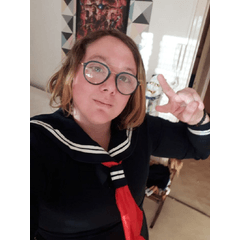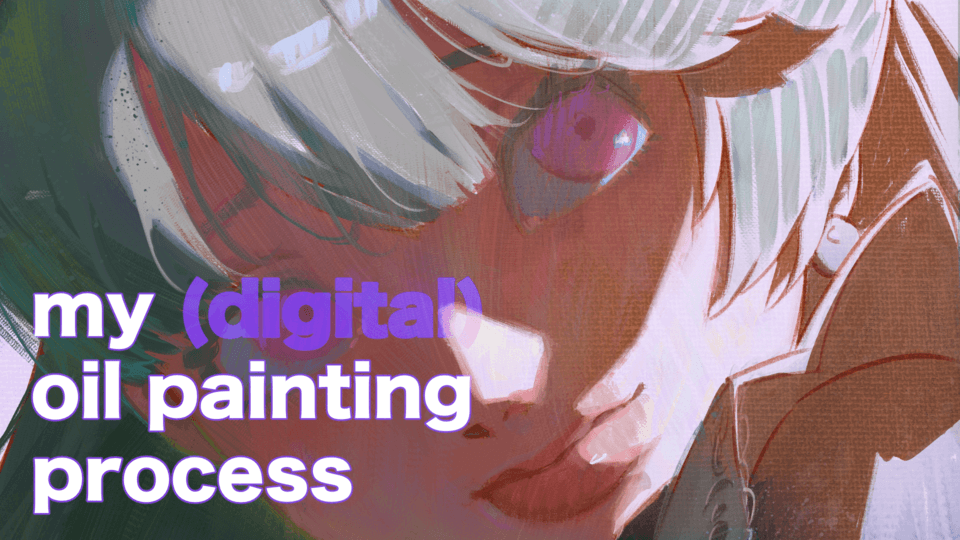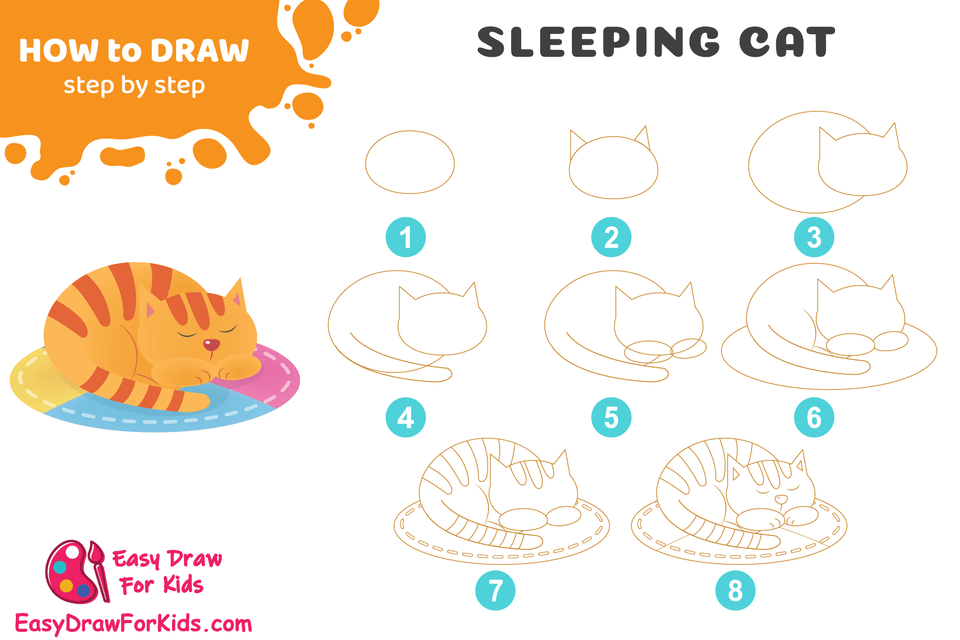All the Different ways of Drawing Eyes (a Basic Guide)
“The eyes are the window of the soul”
This well-known phrase has being around for centuries. In art, whatever they are draw small, big, simplistic, cartoonist or realistic, the eyes are a fundamental aspect to convey the characters emotions, reactions and thoughts, sometimes being the only thing used to understand what is going inside their head.
My name is Vay, and in this tutorial, I am going to use Clip Studio Art to show everyone, being a novice or an experienced artist, how to draw eyes from the ground up, and how to use them to show case their characters expressions and emotions.
Welcome to a Basic Guide of Drawing Eyes.
1. Starting With Simple Shapes
Before we even start drawing, let’s first observe a realistic human eye, and break down into simple shapes.
The most predominant shape of the eye is the circle, technically known as the eyeball.
The eyeball will be our base to know the eyes size, placement and style.
As we can see, the eyeball is formed, by three different size circles, placed on top of each other:
The white base of the eye, named Sclera
The colored circle of the eye, named the iris
And the very small and dark dot in the middle, who we all know as the pupil
Surrounding the organ, there are our uppers, and lower lashes, more commonly known as our eyelids.
The eyelids form an oval shape around the eyeball, covered with a layer of tissue and skin.
When drawing them, the eyelids can be designed in different shapes and angles, allowing each a set of eyes to differentiate from each other, just like in real life.
Now that we know what composes the eye, we can easily simplify and stylize the drawing as we please.
In character design, the character is designed with the use of simple shapes: circles, squares and triangles.
Each primordial shape, is used to convey the character's personality, feelings, and what role in the story they will have.
Each shape gives a different meaning in the character's construction; and this rule also applies when making their eyes. People will often notice the characters eyes first in their design, meaning they will be the first impression of their personality to the public.
- The Square is a shape that conveys strength. Is often seeing as reliable, mature and inflexible. A square shaped eye can be used to express maturity, stubbornness, and give out a down to earth personality.
- The Circle conveys softness, innocence and approachability. A wild circled eye can express a carefree and gentle personality to the character. Not to mention, it allows them to look young and innocent.
- The Triangle represents danger with their sharp edges, being often used in villains and unpredictable characters. But it can also express energy and confidence. An eye with a sharp triangle shape, can give off a menacing and serious look, but it can also give a more elegant vibe to the character.
The angle of the eyelids also influence on the characters personality:
- A droopy angle shows lack of energy and enthusiasm, being great to use on laid-back and annoyed characters, as well as a serene and shy characters.
- A high up angle gives the sensation of alert, energetic and dangerous look to the character.
Always experiment with shapes and angles, to understand what sort of look (ha!) you want your character to have. As well as, what energy and personality, you want them to express in your art
2. Giving the Eyes Some Style
Now that we understand the basic shape of the eye, how do we place each section of it, and how to use shapes to give them an unique personality; is time for us to give them some style.
More specifically, YOUR personal art style
In case you don’t know, there are many art styles we can use, and replicate when drawing. The bases of every art style can be summarized in three categories:
o Realist
o Semi-Realistic
o Cartoonist
If the realist style is the closest we get (that isn't a photograph) to represent real life, and the cartoonist style is the extreme exaggeration of reality; the semi-realistic style is the middle ground between those two – not exaggerated enough to be seen as something out of our reality, but not realistic enough to look like a photograph.
When drawing eyes, is necessary to follow the over all style chosen of the piece. It doesn’t fit to draw extreme realistic eyes in a cartoonist head, as well an over-simplistic and cartoonist eyes on a realistic face.
Every element of the face must be in harmony.
It will always be a matter of practice and self-discovering, to know which style you want to follow and make it as your own.
Here are some examples of eyes in each art style:
- The realistic eye, will follow closely to how eyes look and behave in real life, including the details and painting. Pay extreme close attention to photographs, as well as your own reflection, to understand how eyes show emotion and expressiveness in the everyday life.
- A semi-realistic eye, don’t have to follow reality completely; being allowed to mess around with shapes, sizes, and the amount of details in the painting.
They will follow closely to the basic shapes of the eyes, and their angles. But they will also have more leeway with the size and even the amount of details used, being able to adapt some cartoonist emotions in their design.
- The cartoonist art style, is the one you can go completely crazy with the shape, size and details. There are literally no limits at how you choose to show the emotions and personality of your characters.
Once again, is important to study which style you want to adapt as your own, and how you can make each one mash together in your art. Have always in mind, how much detail you want to put in the drawing, and how much you want to break apart from reality.
At the end of the day, it will depend on your repertoire, and what you enjoy to see in art in general.
We’ll always recreate the things we desire to see more. The more you consume, copy and adapt an expecific art style to your art, the more unique your style will look.
3. Putting to the Test
Let’s use everything we learned so far, by putting a beautiful set of eyes in one of my characters face.
Everyone, met Victoria A. Willians; my original character of a upcoming story I am writing:
As you can see, I mostly enjoy to draw a more Semi-realistic and cartoonist style. Because of it, I tend to follow the basic proportions of the realistic eye, but I have the freedom to play around with the details and emotions.
We have here a head model sheet of my character, and we will use it, to show you how the eyes will look in each position and head angle:
Front View
Before we do anything, let’s start putting two circles where the eyes should be, so we can define their size and placement. Always start drawing your eyes like this, no matter the angle you are doing it.
Trust me, it will make your life a lot easier:
Once we know how big, or how small, we want the eyes to be, we will make the shape of the eyelids, along with the placement of the iris and the pupil. Keep in mind you can play around with the style of those two as well.
Don't worry, we will explore this later on the tutorial:
Let’s put some details. In this stage, we will define how thick or slim the eye-lashes will be and how much detail we want in the drawing, so we can have a clear guide when doing the lineart.
Note: There is no need to draw each and every single eyelash (unless you are doing a very realistic, close up of the eye).
Just like drawing hair, is better to define the shape, instead of putting too much details.
Adding some color, shadows and source of light, and done! A perfect set of eyes
Remember:
A shadow will always be casted under the eyelid, so there will be no light reflecting in the shadow of the eye. This is not a requirement to every art style in existence, and you can choose to use it or not. Just keep this rule in mind, in case you are aiming for a semi-realistic or realistic finalization.
There is a space between the eyes. The distance between a eye and the other, is often the size of the eye itself. So when drawing, always keep in mind the distance between them, and aim to make the distance, the same size of the eye of your character.
But again, this is also not a set in stone rule, but is what most artists do:
3 / 4 View
When drawing the ¾ angle, one of the eyes will look smaller than the other. This happens because, since the head is rotating, one of the eyes will look farther away from our view, making it look smaler than it actually is.
Is a matter of perspective:
Using the guide lines of the face, we can define where we will place the base of the eye, and how small it will appear at this angle, without looking out of place.
Rinse and repeat the preview steps of the front look angle, while keeping in mind the size difference, as well the shadows and lighting, and we are done with another head angle.
Side View
This one is often a bit more complicated for young artists. Many make the mistake of drawing the side eye view too big, or too close the bridge of the nose.
The eye on this angle, looks smaller than the original eye size, almost like it was cut off in half. Not only that, it is placed with a small distance between the nose, looking almost squashed down.
The iris and the pupil also gets smaller, covering a very short area in the front of the eyeball. Like so:
But just because it is smaller, doesn’t mean it loses their expressiveness and style. They are just more subtle to look at. The eye-lashes also get more simplistic, having only a few details shown at this angle.
And there you have it! A perfect set of eyes in every angle.
4. Conveying Proper Emotion
Now that we know all the styles we can use, as well as how to draw eyes in different angles, we need to understand how to make those eyes show some emotions.
How to make your characters eyes, the window to THEIR souls.
Like always, it’s wise to research and study different ways to draw emotions, and how to make your characters more expressive.
Normally, when our emotions are high and positive, every feature of our face goes up (the smile, the cheeks, the eyes...):
And when we are feeling low and lacking energy, our features goes down:
Is important to always remember this, because the up and down movement is shown in our entire body language.
When talking about showing emotions with the eyes, we focus on four details:
o The Eyebrows
o The Eyelids
o The Iris
o The Pupil
Eyebrows:
Is impossible to recreate emotions without eyebrows. Google for people that made the mistake of shaving their eyebrows, and notice how uncanny they look.
Eyebrows are the most important part to show the face’s emotions, and in art is no different.
Even if you decide not to mess around with the details in your drawing, is unwise to ignore the use of eyebrows in your piece.
A good exercise to do, is look at yourself in a mirror and pay attention on how your eyebrows move:
They can go up and down, you can make one go up, and the other stay down, and they automaticaly follow every emotion you try to recreate.
Here are some notes of what I noticed, when doing this little experiment:
o Eyebrows that are up, give off the look of alert, surprised, excited.
o When in center, they show calm, neutrality, serenity.
o Down eyebrows are sad, scared, and melancholic
o When one is up and the other is down, they convey uncertainty, confusion, skepticism, even sass.
When drawing the eyebrows, you stylize them at your free will. They can be thick, thin, small or long. With a gap in the middle or no gap at all. There many different ways to use the eyebrowns, to make your character look more unique:
Eyelids:
Like we explained before, the way you define the shape of the eyelids, can say a lot of your character personality and story. When using them to form expressions, they will also follow the “up and down rule” we mentioned before:
Eyelids that goes up, that look wide open, give off the look of shock, surprise, happiness and excitement.
But having them go down, look close off, can show emotions like suspicion, confusion.
Once partnering up with eyebrows, the array of emotions gets even wider and different.
Here are some examples:
Note: Is possible to convey a different variety of emotions changing only the eyebrows, or just the eyelids. But when using them both together, you not only make your expressions more versatile, but also more believable. Emotions are shown with your whole face, not just a few elements.
Iris:
One might say the iris is just the pretty color of the eyes, used to decorate your character.
I say that using it at their full potential, allow your eyes set to look more lively and interesting to look at.
In the iris, the second thing that is evident, alongside the color, is the light reflection. Using the light that reflects in the eye, allow you to show a variety of different emotions and even personality, for example:
More light reflecting in the eyes, makes your character look more adorable. It express innocence, happiness and excitement.
No light reflecting in the eyes, gives a more serious and somber look. Can show case feelings of shock, fear, even giving a lifeless and scary look to them.
Playing aroung with different simbols for the lights; like hearts and stars, can be used to enhance a specific emotion, like love and happiness. Or even anger or heartbreak, depending on which simbol you choose to use.
You can even distort the iris and the pupil. To enhance even more the emotions.
Pupil:
This is the one mostly used to convey the characters emotions. Differently from the eyebrows and the eyelids, what mostly change when drawing the pupil is the size.
The pupil can be either wilder and full, or small and narrow, and each express a different emotion
Wilder: Alert, happy; overwhelming emotions
Narrow: Surprised, scared, serious; underwhelming emotions
Note:
Partnering up with the ways to shape and stylize the iris, the pupil easily becomes a powerful tool to express different emotions
5. Conclusion
There are many different ways you can draw, express and style the eyes of your characters. Knowing the basics is fundamental, and so is looking for different references and styles that can be used to incorporate in your artwork.
Don’t be afraid to copy another artists ways of drawing eyes, in your own art. Copying and exploring is the fastest way to learn, and to find your very own unique way of drawing.
Buy art books, study guides, what different movies and cartoons, as well video games, and pay attention at how the artists made the characters eyes, and what tricks they used to express different emotions.
Don’t be shy in doing the expressions yourself, and observing how your eyes look in the mirror.
Have fun at this stage, you are free to make as many "happy accidents" as you want.
I hope you liked this very basic guide, on how to draw eyes. Have a wonderful practice, and we see each other in the next tutorial!
























Comment